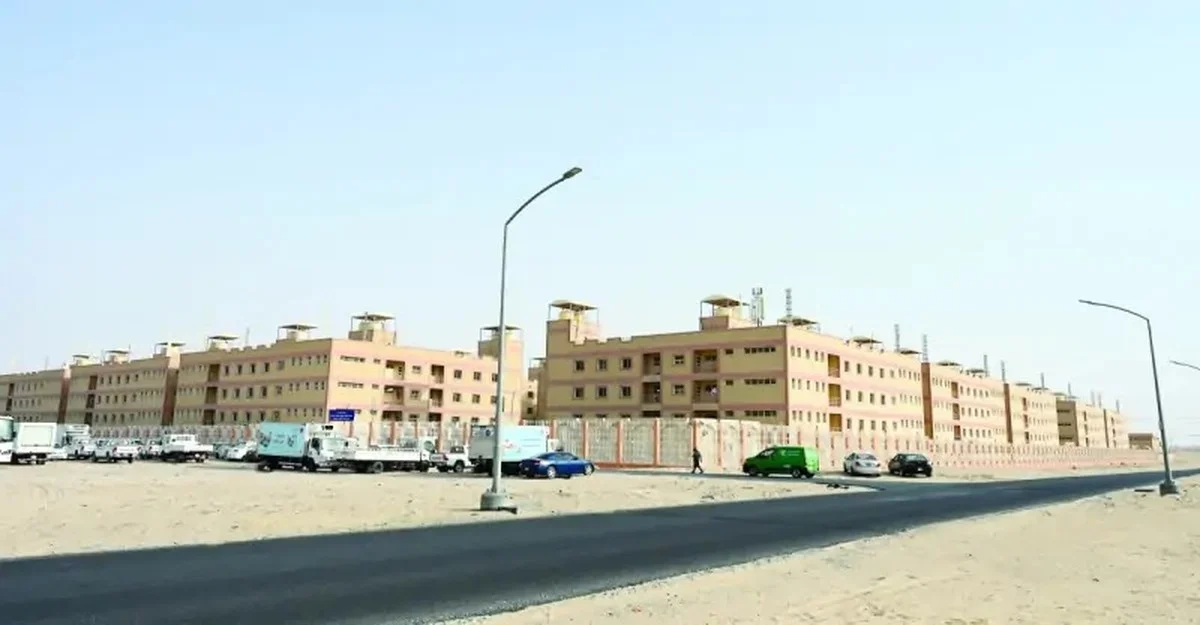10/08/2025
10/08/2025

KUWAIT CITY, Aug 10: In a strategic move to address long-standing housing challenges linked to migrant workers—particularly single men or “bachelors”—the Kuwaiti government is rolling out 12 new residential complexes in designated locations outside family housing zones. These developments are part of a broader national plan to regulate expatriate housing, improve urban organization, and reinforce social and security stability.
The initiative emerges amid intensified security campaigns in overcrowded areas such as Jleeb Al-Shuyoukh, where unsafe and illegal “bachelor houses” were found to pose serious health and security risks. The situation has reignited urgent calls for sustainable solutions, prompting authorities to act decisively.
According to a recent government report, the new model housing complexes are being designed with an integrated urban vision that prioritizes environmental sustainability, public health, and service infrastructure. The developments will complement existing labor cities in Subhan, Amghara, Shadadiyah, and Al-Raqqa, which currently accommodate around 20,000 workers.
Under this expanded plan, six new workers’ cities will be constructed to house approximately 275,000 workers — four of them located in Jahra Governorate and two in Ahmadi. This move is part of a government strategy to relocate workers away from densely populated residential neighborhoods and into purpose-built facilities that ensure order and livability.
The Kuwait Municipality has already begun executing part of the plan. In April, work commenced on a 40,000-square-meter complex in Subhan with the capacity to house 3,000 workers. Additional developments are ongoing in Amghara and Ahmadi, while the largest project — covering 750,000 square meters across five sites—is underway in the northern West Shuaiba area. This mega-complex is expected to accommodate approximately 56,000 workers.
Furthermore, the Shaddadiyah workers’ city is being expanded with three new complexes, increasing its total area to 450,000 square meters and boosting capacity to 42,000 workers.
Integrated design and balanced distribution
Each complex is being designed with a detailed urban blueprint, allocating:
- 20% for organized housing units
- 5% for commercial outlets
- 5% for essential services, including healthcare
- 12% for green spaces
- 5% for infrastructure
- 36.3% for internal ring roads
- 16.7% for buffer zones to maintain privacy and reduce interference
This layout reflects a holistic approach aimed at ensuring livability, reducing congestion, and promoting well-being within workers' communities.
Two proposed sites — one in the west of Al-Hajjaj City and another in Subhan (Block 11) — have been canceled following a comprehensive review to assess long-term feasibility and sustainability. Instead, attention is now focused on six large-scale labor cities, with a combined land area of 13.3 square kilometers.
Two of these fall under the Public Authority for Housing Welfare. One in Subiya, spread across 2.465 million square meters, is projected to house 50,000 workers. The second, located on Al-Salmi Road south of Jahra, spans 1.015 million square meters and will accommodate 25,000 workers.
Officials and urban developers view these complexes not just as housing solutions but as strategic investments in national stability. Organized, well-managed housing allows for easier monitoring, greater public safety, and improved service delivery — all while preserving the dignity of Kuwait’s expatriate workforce.
The recurring problems in Jleeb Al-Shuyoukh have long symbolized the dangers of unregulated bachelor housing—from public health concerns to increased crime risk. With the launch of these new projects, Kuwait is moving toward resolving this issue at its roots by offering structured, secure, and humane living environments.
As authorities continue reshaping Kuwait’s urban and demographic landscape, these complexes signal a long-overdue yet decisive step toward solving a crisis that has spanned decades.


